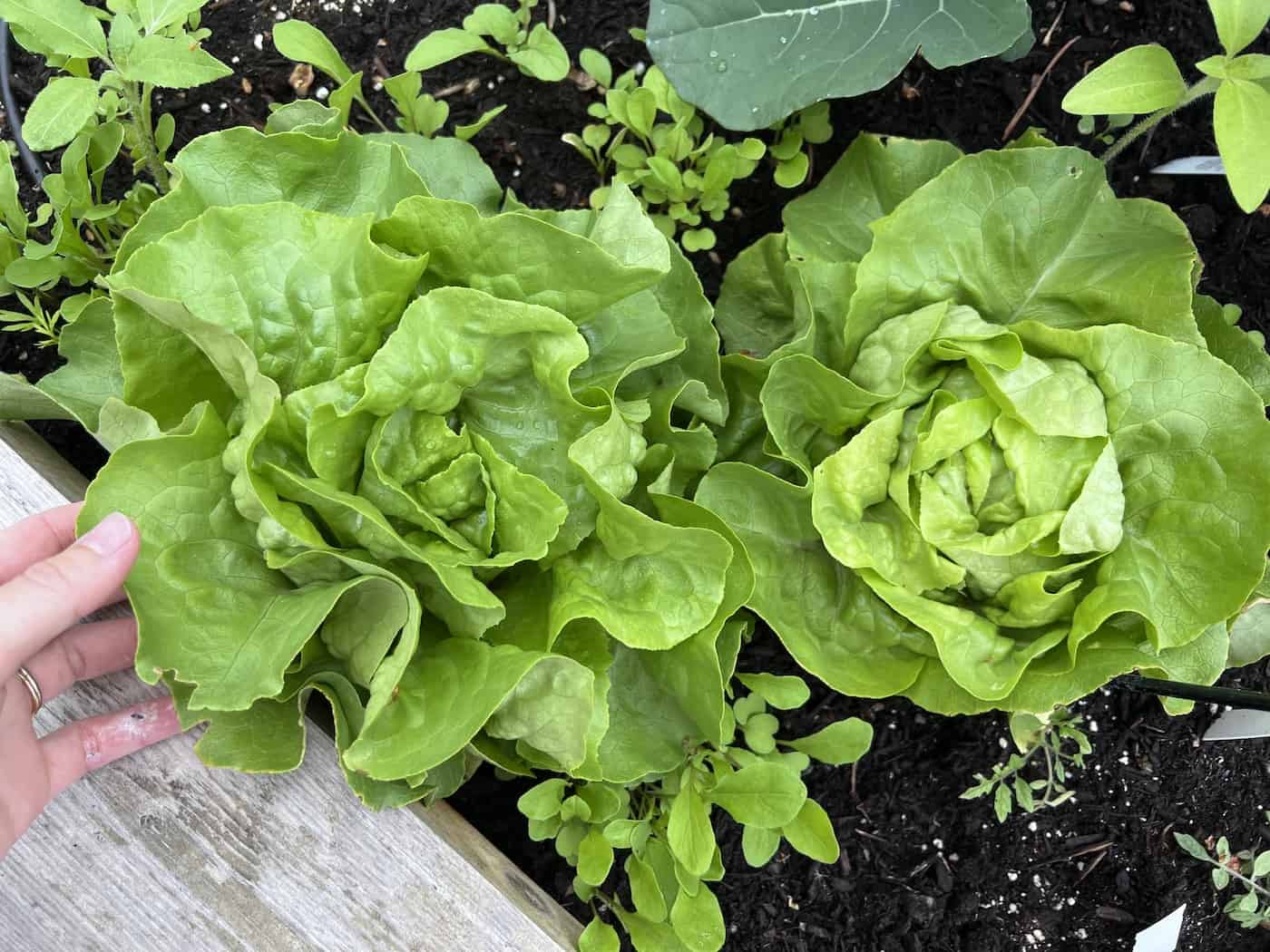Wondering does lettuce need full sun? if you want to keep the plant happy from planting to harvest, monitoring light levels is essential.
Lettuce typically grows best in full sun to partial shade, depending on the growing season and your local climate. Aim for about 5-6 hours of direct sunlight per day, giving them more light when sunlight is less intense and less light in harsh climates. Look out for signs of too little or too much light to limit problems with growth.
How light impacts lettuce growth
To take you back to your school science lessons, it’s important to remember that all plants – lettuce included – undergo photosynthesis. Plants harness sunlight via this process to produce the energy needed for growth, similar to how we feed ourselves. The right amount of sunlight means more energy and, by extension, healthier growth.
However, this doesn’t mean that more sunlight will result in better growth. Just like us humans, plants have a limit to the amount of sunlight they can handle. Each plant species has a specific light requirement based on what they experience in their native environments. These are described in ranges from full sun (around 6 hours of direct sun) to partial shade (about 4 hours of direct sun) and full shade (typically 3 hours or less).
Exposure to sunlight beyond their optimal limit can damage your plants, leading to problems like wilting and sunburnt leaves, stunted growth, and in severe cases, an early death.

Lettuce light requirements
Now back to lettuce. Where does it fall on this light spectrum? Lettuce is considered a cool-season crop that prefers moderate sun and temperatures. They grow best in almost full sun but don’t necessarily need an entire day of direct sunlight like some sun-loving crops.
With its preference for cooler temperatures, full sun can often be too harsh, especially if you live in a warm and sunny climate. Generally, lettuce grows best when given about 5-6 hours of sunlight each day, adjusted with the seasons and your garden environment.
Direct morning sun is preferable as it is gentler and less intense than afternoon sun. You can keep your lettuce shaded in harsh climates by planting it behind taller plants that will cast an afternoon shadow, installing a temporary shade cloth, or planting in containers to move the lettuce around as needed.
Changes between seasons
As with most things in gardening, season has an impact on lighting requirements.
In the cooler seasons of early spring and late fall, lettuce can handle (and may even appreciate) a bit more sunlight throughout the day, given that the sun’s intensity is significantly lower. However, as summer sets in, lettuce becomes more shade-tolerant, particularly in the afternoons when the sun is strongest.
An awareness of how your garden changes throughout the seasons will help you identify the best spot for your lettuce and will let you know if you need to make any adjustments as the seasons change.
Signs of low light exposure
Several signs may indicate that your lettuce is starved for light and needs to be moved.
The first is stretching towards the nearest light source, indicating the leaves are desperately reaching for more sunlight to improve photosynthesis rates. This results in tall and diminished plants that have fewer leaves for harvesting – certainly not something you want when growing lettuce.
The lettuce may also take longer to mature, and the leaves might lack their usual color, appearing less dense and more translucent.
If you notice any of these signs and have ruled out other potential growth problems, it’s time to move your lettuce to a sunnier spot. If you’re growing indoors, consider supplementing with grow lights or moving the pot outdoors to improve growth.
Signs of excessive light exposure
Too much sunlight can also lead to growth problems, especially at the height of summer. Look out for signs of stress like wilting or discoloration. The leaves might take on a burnt or bleached appearance, indicating they are not managing under the harsh sun’s rays.
Another indicator of excessive light exposure is bolting – a condition where the lettuce starts to grow a tall stalk and produce flowers. This is a survival mechanism for the lettuce, causing the leaves to turn bitter. When you’re focused on harvesting, bitter leaves are the last thing you want, so it’s important to keep an eye out for problematic signs.
Once lettuce has bolted, it’s generally best to start with a new plant. Alternatively, pre-empt this situation by keeping an eye on your lettuce during hot weather and providing some extra shade whenever it may be needed.







